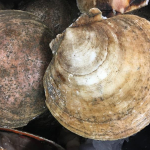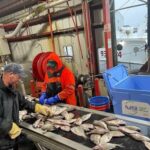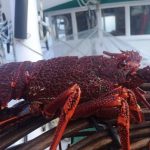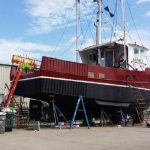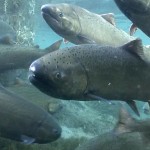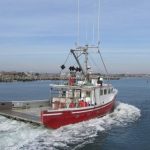Tag Archives: Pollock
Big fight looms at Board of Fish meeting over Prince William Sound trawl bycatch
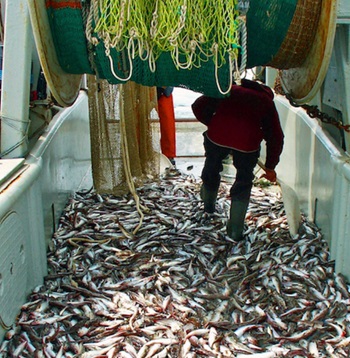 For years, conservationists, tribes and fishermen have feuded over bycatch of salmon in the huge pollock harvest in the remote Bering Sea off Alaska. Now, a new bycatch fight has erupted over a much smaller pollock fishery not far from urban Alaska, in the waters of Prince William Sound, east of Anchorage. This week, the state Board of Fisheries is considering four proposals by a local tribal government and an Alaska sportsmen’s group that could place sharp restrictions on, or even close down, Prince Williams Sound’s annual pollock trawl harvest. Supporters of the proposals cite state data that show the roughly 15 participating boats, most of which come from Kodiak Island, unintentionally scoop up some 900 king salmon and 900 rockfish each year in their wide-mouth trawl nets. And they say that subsistence harvests of those fish need protection. more, >>CLICK TO READ<< 12:07
For years, conservationists, tribes and fishermen have feuded over bycatch of salmon in the huge pollock harvest in the remote Bering Sea off Alaska. Now, a new bycatch fight has erupted over a much smaller pollock fishery not far from urban Alaska, in the waters of Prince William Sound, east of Anchorage. This week, the state Board of Fisheries is considering four proposals by a local tribal government and an Alaska sportsmen’s group that could place sharp restrictions on, or even close down, Prince Williams Sound’s annual pollock trawl harvest. Supporters of the proposals cite state data that show the roughly 15 participating boats, most of which come from Kodiak Island, unintentionally scoop up some 900 king salmon and 900 rockfish each year in their wide-mouth trawl nets. And they say that subsistence harvests of those fish need protection. more, >>CLICK TO READ<< 12:07
Pollock trawl closure sends economic ripples across Kodiak as fishermen adapt
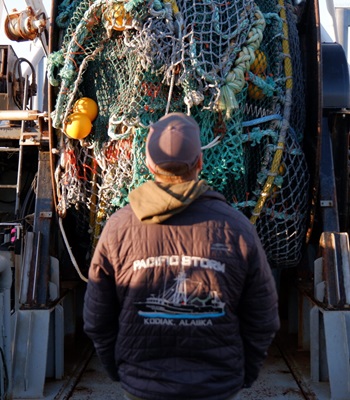 Cole Hockema has been fishing since he was a teenager growing up in Oregon. Hockema captains the F/V Pacific Storm, a 100-foot trawler based out of Kodiak, which his father owns. The vast majority of the Central Gulf of Alaska trawl fleet is made up of local boats like his. According to the trade group Alaska Groundfish Data Bank, 19 boats were fishing in the Central Gulf of Alaska when the pollock fishery closed on Sept. 25. 15 of those are homeported in Kodiak. Normally, fishermen like Hockema would be out on the water until early November, when the Gulf of Alaska’s pollock B season typically closes. But this fall season ended just three weeks into fishing, when two vessels incidentally hauled in approximately 2,000 Chinook salmon, which exceeded the fishery’s annual bycatch limit. Hockema said the Pacific Storm was offloading its catch on Sunday, Sept. 22 when they first got the news about the bycatch and he knew the fleet would need to stop fishing immediately. more, >>CLICK TO READ<< 16:27
Cole Hockema has been fishing since he was a teenager growing up in Oregon. Hockema captains the F/V Pacific Storm, a 100-foot trawler based out of Kodiak, which his father owns. The vast majority of the Central Gulf of Alaska trawl fleet is made up of local boats like his. According to the trade group Alaska Groundfish Data Bank, 19 boats were fishing in the Central Gulf of Alaska when the pollock fishery closed on Sept. 25. 15 of those are homeported in Kodiak. Normally, fishermen like Hockema would be out on the water until early November, when the Gulf of Alaska’s pollock B season typically closes. But this fall season ended just three weeks into fishing, when two vessels incidentally hauled in approximately 2,000 Chinook salmon, which exceeded the fishery’s annual bycatch limit. Hockema said the Pacific Storm was offloading its catch on Sunday, Sept. 22 when they first got the news about the bycatch and he knew the fleet would need to stop fishing immediately. more, >>CLICK TO READ<< 16:27

NPFMC asks industry for recommendations on Bristol Bay red king crab
The Bristol Bay red king crab fishery is historically one of the most valuable in the state, but for the last decade, the stock has been declining. Last fall, surveys showed that the female biomass of the stock had fallen below acceptable levels for harvest, and managers closed it. At the April NPFMC meeting, the council members approved a motion to ask the industry to come back with a list of voluntary actions harvesters and other industry stakeholders can take to help reduce bycatch of Bristol Bay red king crab and reduce discard mortality in the directed fishery. Industry stakeholders include not just the directed harvesters in the red king crab fishery, but also reach to the Pacific cod sector, pollock, and Amendment 80 fleets, which impact red king crab stocks based on area and bycatch rates. >click to read< 15:10
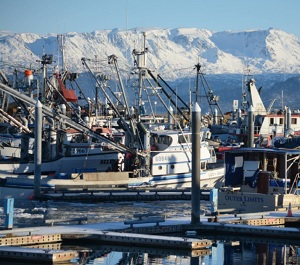
Gulf of Alaska Pollock fishermen agree to delay season, will allow roe to ripen, making fish more valuable.
Trawl fishermen targeting pollock in the Gulf of Alaska have collectively agreed to stand down from the Jan. 20 start of the fishery in order to target the fish in their more lucrative phase of harvesting the roe, instead of the flesh of the fish which is used more in fish sticks and surimi. The fishermen want to wait for two weeks to allow the roe to ripen, making the fish more valuable.,, In June 2019, the North Pacific Management Council voted to combine the four pollock seasons — two in spring and two in fall — to just two seasons: one that runs from Jan. 20 to May 31, and another that runs from Sept. 1 to Nov. 1. >click to read< 08:20
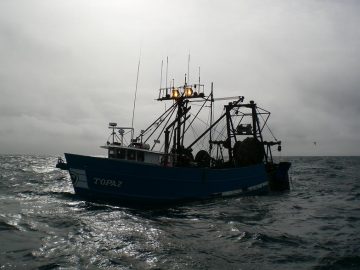
Kodiak trawl fleet ends protest, negotiates higher price
The Kodiak trawl fleet ended its protest over the price the fleet had been offered for its pollock harvest. The fleet ended its protest on Sunday after successfully negotiating a higher price from processors, the Kodiak Daily Mirror reported . After an eight-day stand-down by the fleet, all of the town’s processors offered a price of 11 cents per pound for pollock under a thousand grams. The negotiated price is up from the previous offering of 10 cents per pound for fish a thousand grams and under. >click here to read< 11:06
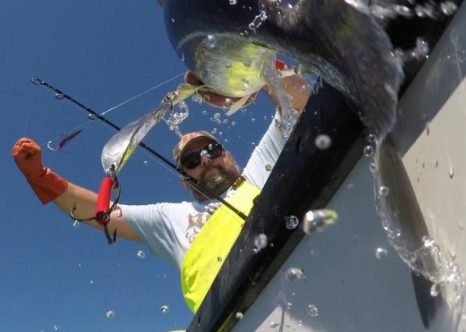
Caught today, on your plate tomorrow
It is 1:36 a.m. Friday, Sept. 8 and the crew of the small fishing boat F/V Finlander, a 36-foot Northern Bay, leaves the protection of the channel and ventures into the open Atlantic Ocean. The pilot house of the Finlander is dark, illuminated only by a sole Global Positioning System (GPS) display screen showing navigational information and an eastward course plot. The boat begins to pitch as sea swells grow larger and cross winds increase. “Today is going to be a rough one.” says Capt. Tim Rider, a Dover native and owner of the Finlander. “The wind is coming from a different direction than the swells, it’s going to bounce us all over. It’s going to get rougher the farther out we go, but I think we can handle it.” click here to read the story 08:15
The Man Who Got Americans to Eat Trash Fish Is Now a Billionaire
 Chuck Bundrant was a college freshman with $80 in his pocket when he drove halfway across the country to Seattle to earn a few bucks fishing. The year was 1961. He hasn’t stopped fishing since. And today, Bundrant, the founder and majority owner of Trident Seafoods, is worth at least $1.1 billion, according to the Bloomberg Billionaires Index.,,, Chuck Bundrant’s story is the stuff of industry legend. “He knew nothing about fishing boats, or catching and processing crab and salmon,’’ son Joe said in a corporate video two years ago. “He’d only watched a movie with John Wayne in it called ‘North to Alaska.’ And he heard there was money to be made on the fishing grounds, thousands and thousands of miles from home.’’ After a few years, Bundrant was looking for a way to start a business in the industry. He met two other crab fishermen — Kaare Ness and Mike Jacobson — and in 1973 the three put their money together and built the Billikin, a 135-foot boat that changed the seafood industry, according to Trident’s corporate history. click here to read the story 19:06
Chuck Bundrant was a college freshman with $80 in his pocket when he drove halfway across the country to Seattle to earn a few bucks fishing. The year was 1961. He hasn’t stopped fishing since. And today, Bundrant, the founder and majority owner of Trident Seafoods, is worth at least $1.1 billion, according to the Bloomberg Billionaires Index.,,, Chuck Bundrant’s story is the stuff of industry legend. “He knew nothing about fishing boats, or catching and processing crab and salmon,’’ son Joe said in a corporate video two years ago. “He’d only watched a movie with John Wayne in it called ‘North to Alaska.’ And he heard there was money to be made on the fishing grounds, thousands and thousands of miles from home.’’ After a few years, Bundrant was looking for a way to start a business in the industry. He met two other crab fishermen — Kaare Ness and Mike Jacobson — and in 1973 the three put their money together and built the Billikin, a 135-foot boat that changed the seafood industry, according to Trident’s corporate history. click here to read the story 19:06
2014 study shows haddock is booming and cod remains in decline in the northeast
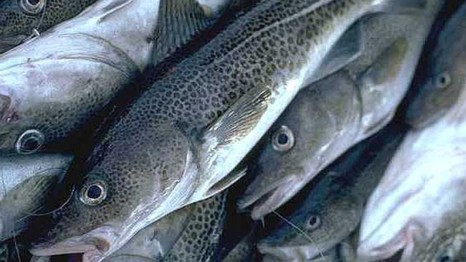 U.S. government scientists reporting on fish stocks off New England are reaching the same conclusions as their Canadian counterparts who have found that haddock is booming and cod remains in decline in the northeast. On Monday, the Northeast Fisheries Science Centre at Woods Hole, Massachusettes released an assessment of 20 northeast ground fish stocks from 2014 surveys. “The rapid increase in haddock, redfish, pollock and white hake contrasts sharply with the decline of cod and the flatfish species,” the report states. Read the rest here 09:13
U.S. government scientists reporting on fish stocks off New England are reaching the same conclusions as their Canadian counterparts who have found that haddock is booming and cod remains in decline in the northeast. On Monday, the Northeast Fisheries Science Centre at Woods Hole, Massachusettes released an assessment of 20 northeast ground fish stocks from 2014 surveys. “The rapid increase in haddock, redfish, pollock and white hake contrasts sharply with the decline of cod and the flatfish species,” the report states. Read the rest here 09:13
Warming waters pose dangers to Arctic cod, research finds – saffron cod, pollock and Pacific cod could thrive!
 A research project being conducted by National Oceanic and Atmospheric Administration scientists has found that even a moderate warming of waters could spell dire consequences for the Arctic cod, a high-fat fish important to the food web. But other fish with lower fat content — pollock, Pacific cod and saffron cod — can survive and even thrive in warming waters, the research finds. Meanwhile, another NOAA-led study found that larvae of northern rock fish appear to be resilient to increased levels of acidity in marine waters. Read the rest here 19:14
A research project being conducted by National Oceanic and Atmospheric Administration scientists has found that even a moderate warming of waters could spell dire consequences for the Arctic cod, a high-fat fish important to the food web. But other fish with lower fat content — pollock, Pacific cod and saffron cod — can survive and even thrive in warming waters, the research finds. Meanwhile, another NOAA-led study found that larvae of northern rock fish appear to be resilient to increased levels of acidity in marine waters. Read the rest here 19:14
Pollock, salmon catchers clash over bycatch
 Severe declines closed chinook salmon fishing on the Yukon River this year, and further steps to keep the big fish out of Bering Sea trawl nets are under consideration by the North Pacific Fishery Management Council. “The biggest reduction in salmon bycatch has probably occurred,” said Stephanie Madsen, executive director of the At Sea Processors Association, representing pollock factory trawlers. The public shouldn’t expect dramatic reductions, although efforts may be made to “nibble around the edges,” she said. Read the rest here 10:03
Severe declines closed chinook salmon fishing on the Yukon River this year, and further steps to keep the big fish out of Bering Sea trawl nets are under consideration by the North Pacific Fishery Management Council. “The biggest reduction in salmon bycatch has probably occurred,” said Stephanie Madsen, executive director of the At Sea Processors Association, representing pollock factory trawlers. The public shouldn’t expect dramatic reductions, although efforts may be made to “nibble around the edges,” she said. Read the rest here 10:03
Groundfishing aground? The rise and fall of Maine’s offshore fishing industry – Lobster catch keeps going up, up, up
 “I was here from 1989-1996, when we opened up at 4 a.m. and sometimes ran until midnight,” says General Manager Bert Jongerden,,, Now, Portland is a distant third behind New Bedford and Gloucester. The reasons are many, but Jongerden says the Portland Fish Exchange’s fortunes very much have mirrored the rise and fall of New England’s offshore fishing industry over the past 30 years. Read the rest here 11:32
“I was here from 1989-1996, when we opened up at 4 a.m. and sometimes ran until midnight,” says General Manager Bert Jongerden,,, Now, Portland is a distant third behind New Bedford and Gloucester. The reasons are many, but Jongerden says the Portland Fish Exchange’s fortunes very much have mirrored the rise and fall of New England’s offshore fishing industry over the past 30 years. Read the rest here 11:32
Pollock as halibut bait shows mixed results, Good in the GOA! This is Fish Radio. I’m Laine Welch
 Pollock has been tested as a halibut bait to replace pricier chum salmon. Each year halibut researchers use over 300-thousand pounds of chums in their stock surveys, costing nearly half a million dollars. The baits are used at more than 1,200 testing stations from Oregon to the Bering Sea. A study three years ago showed some promising signs for pollock. Listen @fishradio 19:55
Pollock has been tested as a halibut bait to replace pricier chum salmon. Each year halibut researchers use over 300-thousand pounds of chums in their stock surveys, costing nearly half a million dollars. The baits are used at more than 1,200 testing stations from Oregon to the Bering Sea. A study three years ago showed some promising signs for pollock. Listen @fishradio 19:55
Pollock, cod catches up; halibut fleet prepares for cuts
 The first fishing openings of 2014 will be for various groundfish around the state, and limits are up for pollock in the Gulf of Alaska and the Bering Sea and Aleutian Islands. In the Bering Sea, pollock fishermen will, as usual, have the largest share of the 2 million metric ton cap in 2014, with a total allowable catch, or TAC, of 1.267 million metric tons for the eastern Bering Sea. The BSAI Pacific cod fisheries also open in January. Read more@alaskajournal 14:09
The first fishing openings of 2014 will be for various groundfish around the state, and limits are up for pollock in the Gulf of Alaska and the Bering Sea and Aleutian Islands. In the Bering Sea, pollock fishermen will, as usual, have the largest share of the 2 million metric ton cap in 2014, with a total allowable catch, or TAC, of 1.267 million metric tons for the eastern Bering Sea. The BSAI Pacific cod fisheries also open in January. Read more@alaskajournal 14:09

































